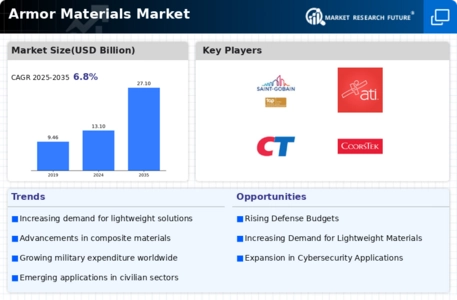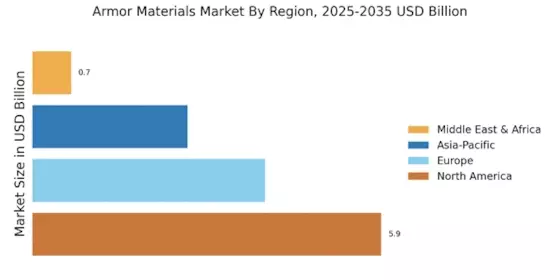Leading market players are investing heavily in research and development in order to expand their product lines, which will help the Armor Materials Market, grow even more. Market participants are also undertaking a variety of strategic activities to expand their global footprint, with important market developments including new product launches, contractual agreements, mergers and acquisitions, higher investments, and collaboration with other organizations. To expand and survive in a more competitive and rising market climate, Armor Materials industry must offer cost-effective items.
Manufacturing locally to minimize operational costs is one of the key business tactics used by manufacturers in the global Armor Materials industry to benefit clients and increase the market sector. In recent years, the Armor Materials industry has offered some of the most significant advantages to medicine. Major players in the Armor Materials Market, including DuPont, DSM, Honeywell International Inc, Saint-Gobain, 3M, KONINKLIJKE TEN CATE BV., ATI, SAAB AB, CERAMTEC, and CoorsTek, Inc., are attempting to increase market demand by investing in research and development operations.
Teijin Ltd. (Teijin) is a technology-focused holding corporation that provides solutions in the fields of healthcare, environment and energy, information and electronics, and safety and protection. It produces and sells aramid fibre, carbon fibre goods, synthetic fibre, films, polyester films, resin products, chemical products, IT products, medications, and water purification systems. It also creates and distributes IT products. The business sells medications for the treatment of conditions such as respiratory, cardiovascular, metabolic, and other illnesses as well as ailments of the bones and joints. Devices for home oxygen therapy and those connected to sleep disordered breathing are also available.
Teijin has operations in Asia, Europe, America, and Japan. The business offers its goods across Europe, the Americas, and Asia. Tokyo, Japan is home to Teijin's headquarters. Teijin Limited created high-performance fibres using green raw materials in November 2020. The fibres would be employed in numerous products, such as protective gear, airfreight containers, and vehicle tyres.
An organisation that offers technology-based materials and solutions is DuPont de Nemours Inc (DuPont), formerly known as DowDuPont Inc. It provides materials and printing systems to the advanced printing sector as well as materials and solutions for the production of integrated circuits and semiconductors, addressing both the front and back ends of the manufacturing process. Adhesives, advanced printing solutions, animal nutrition, building supplies, biomaterials, electronic solutions, textiles, fibres & nonwovens, food & beverage ingredients, industrial films, medical devices, resins, and other products are among the company's product offerings.
Automobile, building and construction, energy, electronics, food and beverage, aerospace, textile, medical, personal care, and packaging and printing are just a few of the industries it supports. The U.S. city of Wilmington, Delaware, is home to DuPont. Core Matrix Technology, a monolithic fabric structure that will dramatically lessen backface damage, was purchased by DuPont in February 2021 from Tex Tech. It improved the ballistic and fragmentation performance for military and law enforcement personnel.


















Leave a Comment